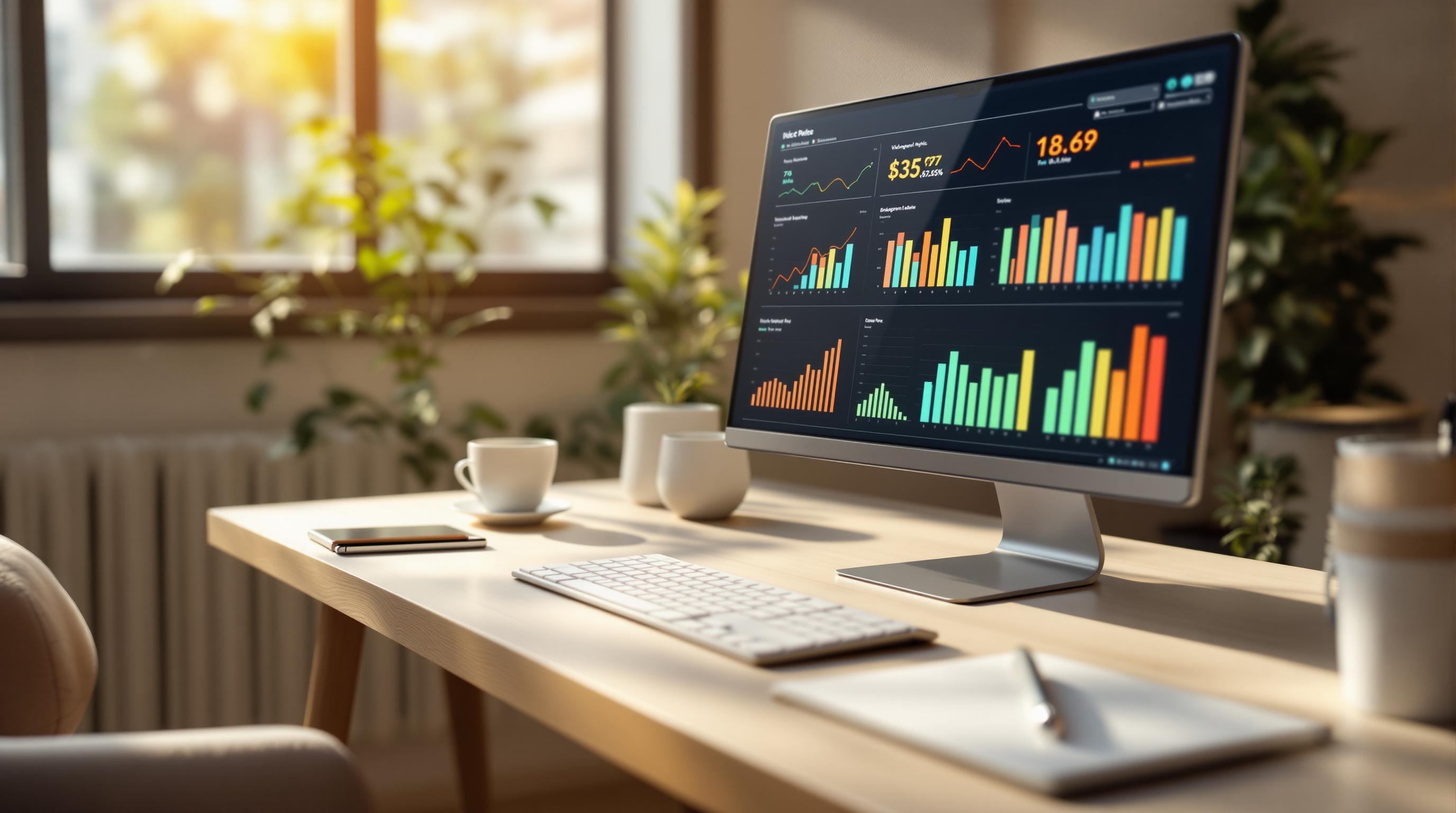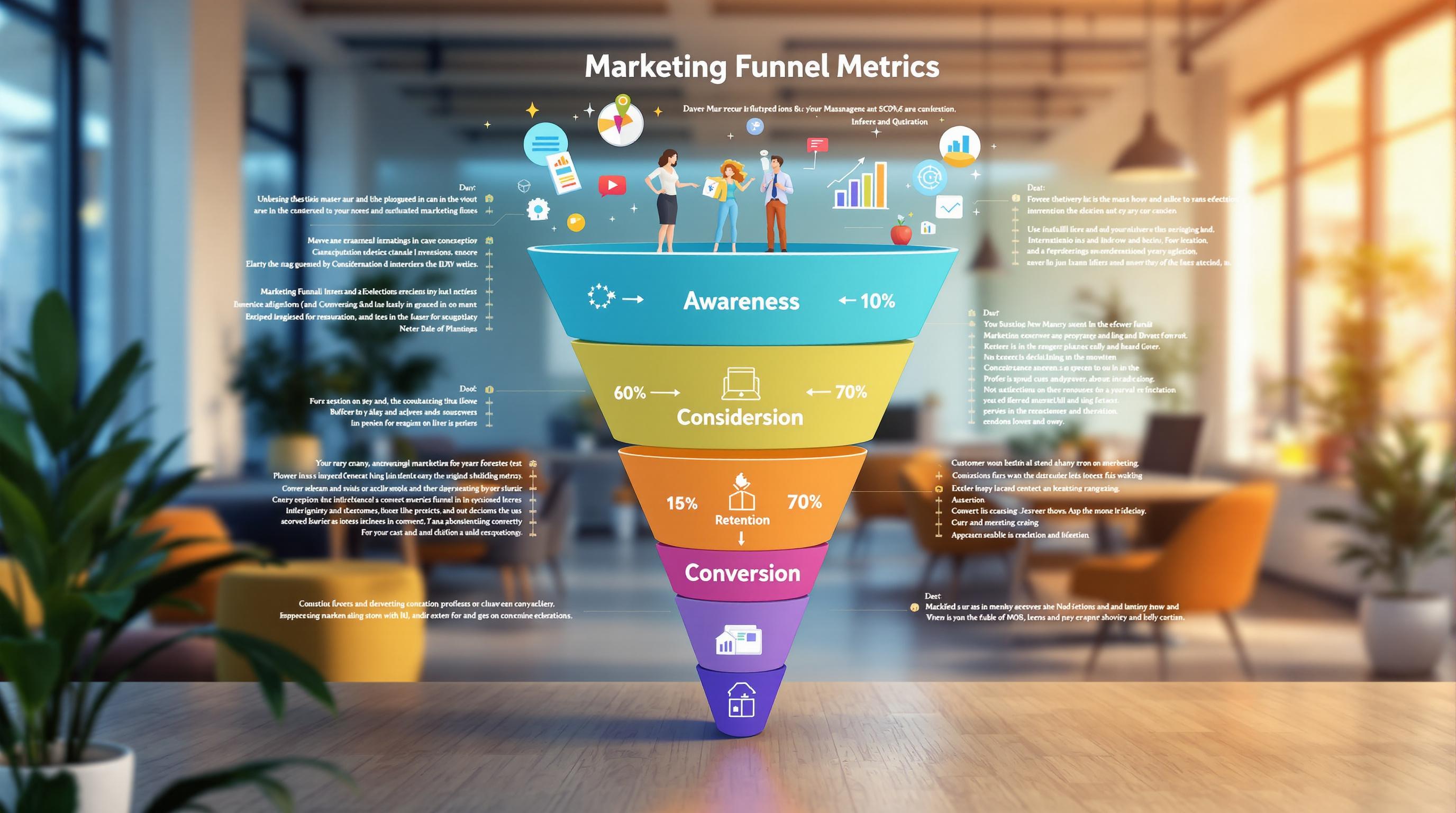Behavioral triggers and engagement scoring are essential tools in digital marketing to deliver personalized experiences and improve customer engagement. Here's what you need to know:
- Behavioral Triggers: Automated actions based on user behavior (e.g., cart abandonment emails or product suggestions).
- Engagement Scoring: Assigns points to user actions (e.g., email clicks or downloads) to measure interest and prioritize leads.
Why Use Them Together?
- Focus on active, high-value leads.
- Automate timely, relevant responses.
- Boost conversions by aligning actions with customer intent.
Key Benefits:
- Better lead quality.
- Tailored experiences.
- Improved communication and conversions.
To implement this, use tools like HubSpot or ActiveCampaign and track key metrics (e.g., email opens, page visits). Combining these methods ensures smarter marketing strategies that drive results.
What Are Behavioral Triggers?
Definition and How They Work
Behavioral triggers are automated marketing tools designed to respond directly to specific customer actions. Think of them as a smart "if-this-then-that" setup that helps marketers deliver personalized and timely messages.
Here’s how they function:
| Component | Purpose | Example |
|---|---|---|
| Action Detection | Tracks user behavior | Visiting a website, opening an email |
| Trigger & Response | Sets criteria and responds | Cart value > $100 triggers a personalized email |
These triggers work by aligning communication with customer behavior. By being timely and relevant, they not only improve individual interactions but also guide leads through the marketing funnel, addressing each stage of customer intent.
Examples of Behavioral Triggers
Here are some common ways businesses use behavioral triggers:
| Trigger Type | Response Action | Business Benefit |
|---|---|---|
| Cart Abandonment | Sends recovery email | Recovers potential lost sales |
| Content Downloads | Offers follow-up resources | Builds stronger lead interest |
| Product Page Views | Suggests related products | Encourages cross-selling |
| Inactive Account | Launches re-engagement campaign | Reduces customer churn |
By identifying key customer actions, marketers can set up systems to respond quickly and effectively. The goal is to ensure every trigger supports moving customers forward in the buying journey while keeping communication natural and unobtrusive.
Behavioral triggers are powerful, but pairing them with engagement scoring ensures resources are focused on the most valuable interactions.
Basics of Engagement Scoring
What Is Engagement Scoring?
Engagement scoring offers a way to gauge long-term customer interest by assigning point values to specific actions. Unlike behavioral triggers, which focus on immediate reactions, engagement scoring helps marketers evaluate and prioritize leads based on their activity levels and potential value to the business [2].
Key Elements of Engagement Scoring
Engagement scoring relies on three main components:
| Component | Description | Example Actions |
|---|---|---|
| Behavioral Data | Tracks user interactions to measure engagement | Email clicks, content downloads, website visits |
| Customer Details | Uses demographic information | Industry, job title, company size |
| Engagement Metrics | Focuses on measurable interactions | Purchase history, event attendance, subscription status |
These components work together to provide a clearer picture of customer engagement [1]. Once these are defined, the next step is creating a scoring system that aligns with your business goals.
How to Build an Engagement Score
Building an effective engagement score involves a step-by-step approach:
| Action Type | Point Value | Decay Period |
|---|---|---|
| Email Opens | 1-2 points | 30 days |
| Content Downloads | 5-10 points | 60 days |
| Product Page Visits | 3-5 points | 45 days |
| Event Registration | 15-20 points | 90 days |
Here’s how to get started:
- Define Scoring Criteria: Assign point values to actions that align with your marketing objectives.
- Set Up Tracking: Use tools like Marketo, Eloqua, or Pardot to monitor and log customer activities [2].
- Establish Score Thresholds: Create categories like "cold", "warm", and "hot" based on point ranges to guide specific marketing strategies.
Understanding Behavioral Triggers and Engagement Scoring
sbb-itb-a84ebc4
Using Behavioral Triggers with Engagement Scoring
Combining behavioral triggers with engagement scoring creates a system that allows marketers to deliver personalized campaigns on autopilot. This approach ensures responses are timely and aligned with each lead's interest level.
Lead Nurturing with Engagement Scores
Engagement scores make lead nurturing smarter by activating tailored actions. For instance, leads with lower scores might receive educational content, while high-scoring leads can prompt immediate sales team follow-ups. Tools like ActiveCampaign and DESelect make it easy to set up and automate these trigger-based campaigns [4].
By linking triggers to engagement scores, marketers can keep their outreach both timely and relevant.
Personalizing Content with Engagement Scores
Engagement scores also help fine-tune content delivery to match individual preferences. For example, leads who download resources might receive more detailed materials, while those browsing product pages could be offered demos [3].
To make this work, marketers should:
- Track key actions that signal readiness to buy
- Adjust content strategies as engagement levels change
- Regularly review how well triggers are working
- Refine scoring methods based on what drives conversions
Tools like DESelect simplify this process by automating scoring and content delivery [1]. This approach ensures consistent, relevant communication while scaling marketing efforts efficiently.
Tools and Resources for Implementation
Platforms like ActiveCampaign and HubSpot make it easier to set up behavioral triggers and engagement scoring. These tools help marketers automate responses and fine-tune their engagement strategies.
Platforms for Marketing Automation
- ActiveCampaign: Known for its automation tools, it's a great fit for small businesses looking to streamline their marketing efforts.
- HubSpot: With its Professional plan (priced at $800/month), HubSpot offers advanced features like engagement scoring, CRM integration, and detailed analytics - perfect for larger enterprises.
When choosing a platform, consider factors like how well it scales with your needs and its integration capabilities. Keep an eye on metrics such as open rates, click-through rates, and conversion rates to continually improve your automation efforts.
Resources from the Marketing Funnels Directory

The Marketing Funnels Directory is a go-to resource for tools and guides tailored to different funnel strategies. They offer:
- Tools for automating social media marketing
- Platforms designed for content marketing
- Resources aimed at optimizing B2B funnels
- Comparisons of top marketing automation vendors
These resources can help you implement behavioral triggers and engagement scoring effectively across various marketing funnels.
Conclusion
Using behavioral triggers alongside engagement scoring turns marketing automation into a highly effective tool for boosting customer engagement and conversions. This method allows for better segmentation, automates tailored outreach, and ensures resources are directed toward leads that matter most.
Here’s how this combination stands out:
- Precision Targeting: Behavioral triggers paired with engagement scoring help marketers focus on valuable leads, automate outreach tailored to individual behaviors, and fine-tune strategies using data like click-through and conversion rates.
- Scalable Growth: These systems are flexible enough to start small and grow with your needs. Success relies on tracking customer actions consistently and adjusting scoring thresholds based on results.
- Ongoing Optimization: Regularly analyzing engagement metrics ensures strategies stay effective, improving customer interactions and campaign performance.
For marketers aiming to enhance their automation strategies, the Marketing Funnels Directory offers resources tailored to various funnel approaches. These tools can help businesses build scoring models and integrate behavioral triggers effectively.
As these tools and methods advance, companies that excel in combining behavioral triggers with engagement scoring will be better equipped to deliver personalized, timely, and impactful customer experiences that drive results.
FAQs
What is a trigger in marketing automation?
Triggers are automated actions set off by specific customer behaviors. They work seamlessly with engagement scoring to help marketers deliver personalized and timely campaigns.
Here’s why triggers are so effective in marketing automation:
- Immediate Action: Triggers respond instantly to customer activities, ensuring timely follow-ups based on real-time behavior.
- Hands-Free Processes: Once set up, triggers handle tasks like sending emails or updating CRM records automatically.
| Trigger Type | Example Actions | Typical Response |
|---|---|---|
| Digital Interactions | Page visits, Email clicks | Follow-up sequences |
| Form Submissions | Downloads, Sign-ups | Onboarding content |
| Purchase Activity | First purchase, Repeat orders | Cross-sell campaigns |
When paired with engagement scoring, triggers become even more effective. They align automated actions with a lead’s level of interest, ensuring communication stays relevant and meaningful.
For businesses aiming to refine their trigger-based automation, the Marketing Funnels Directory offers tools and resources tailored to different funnel strategies, making it easier to fine-tune triggers across customer interactions.
Grasping how triggers work is key to using them effectively alongside engagement scoring, as highlighted earlier in this guide.


